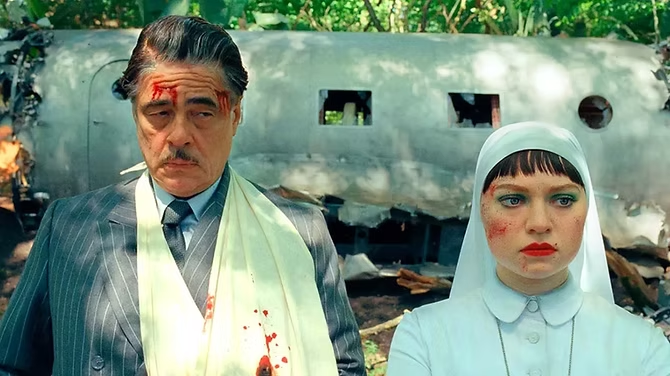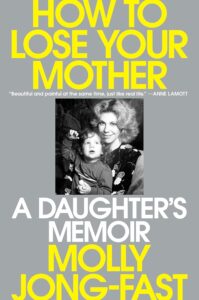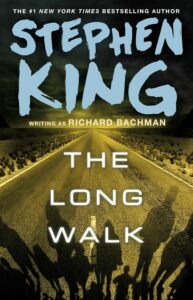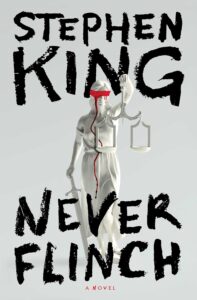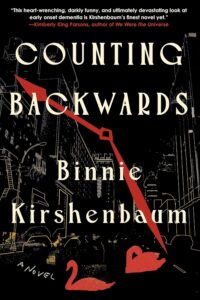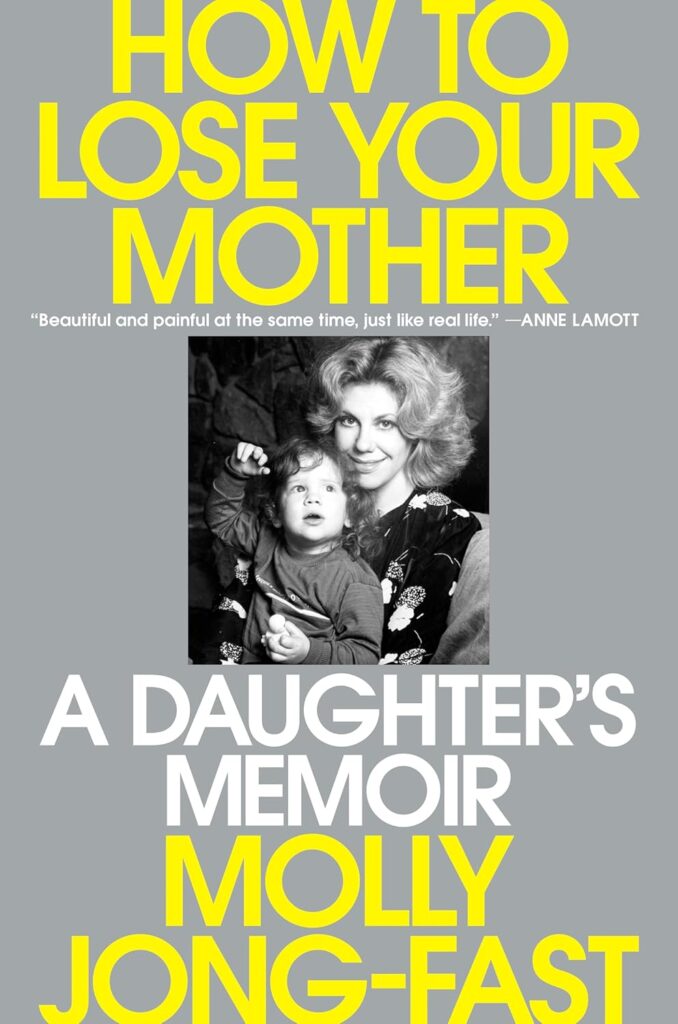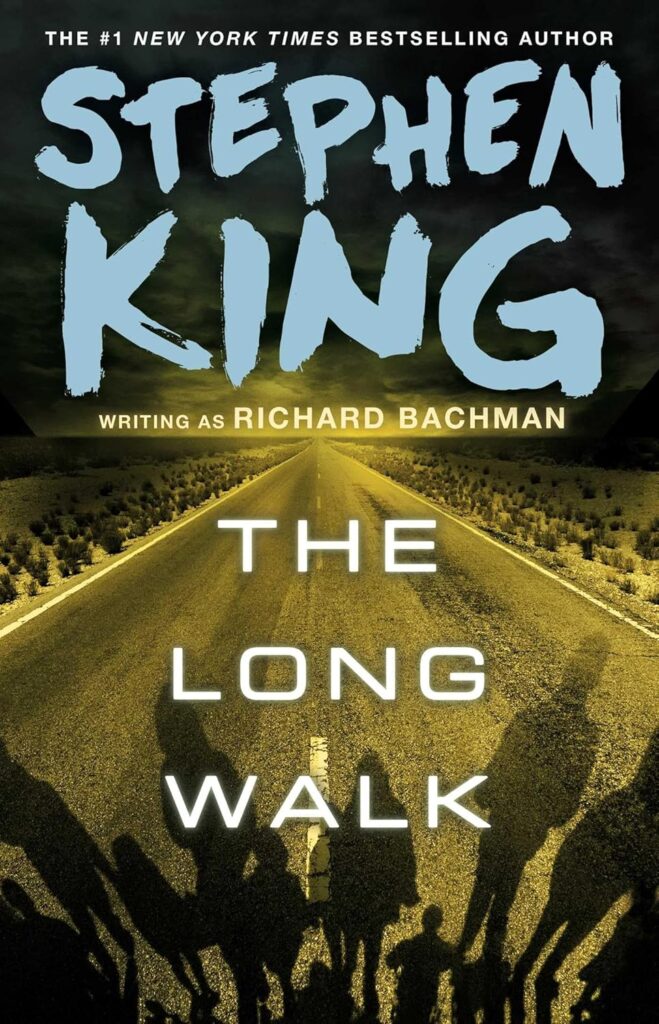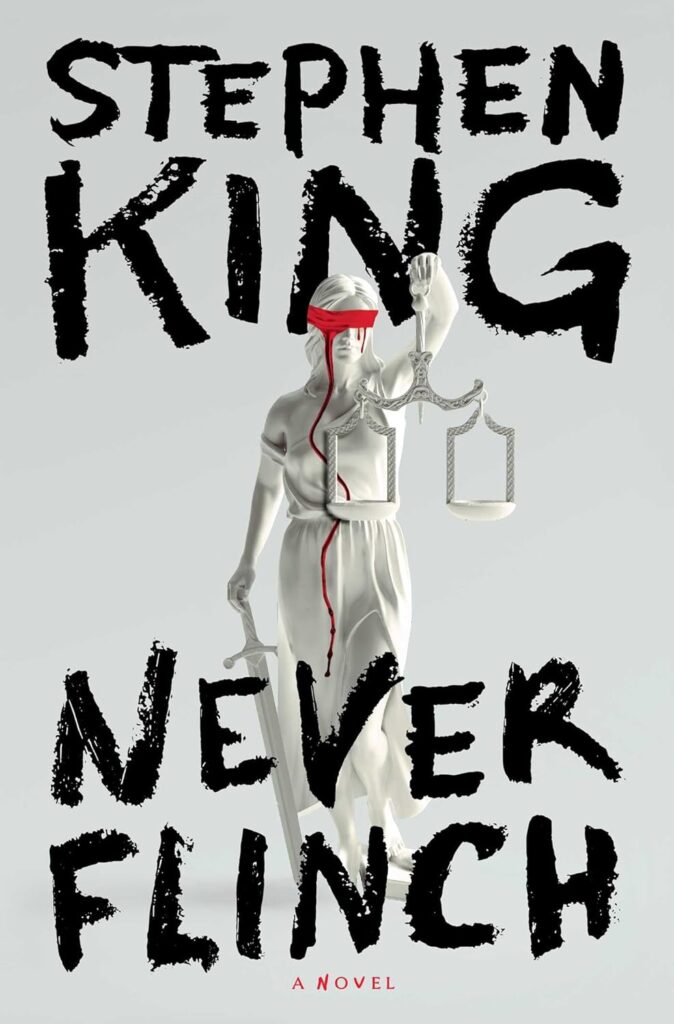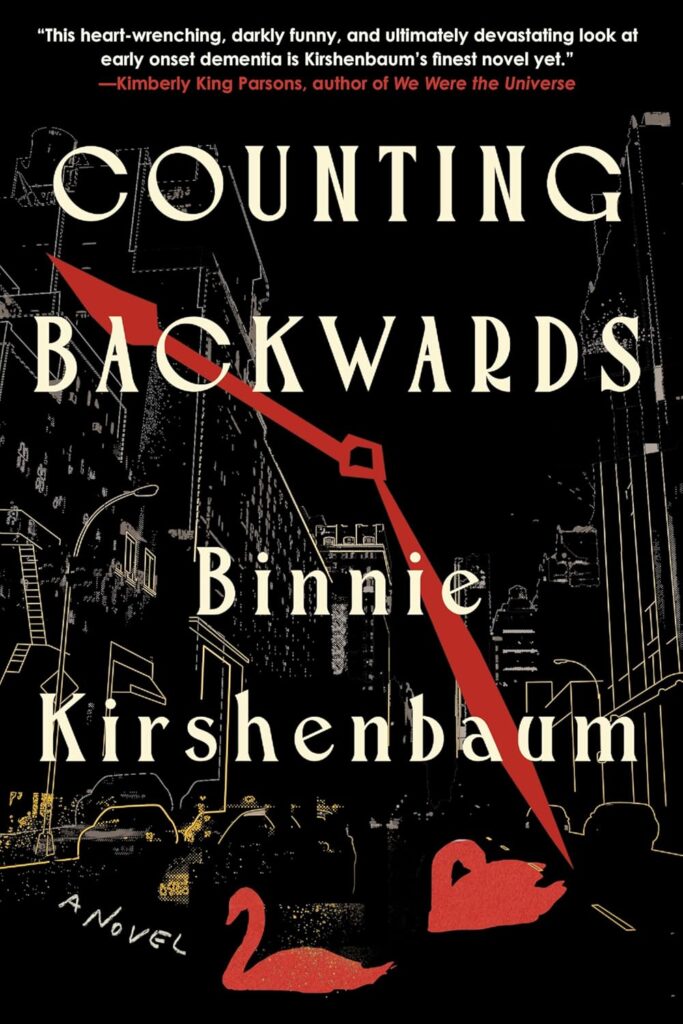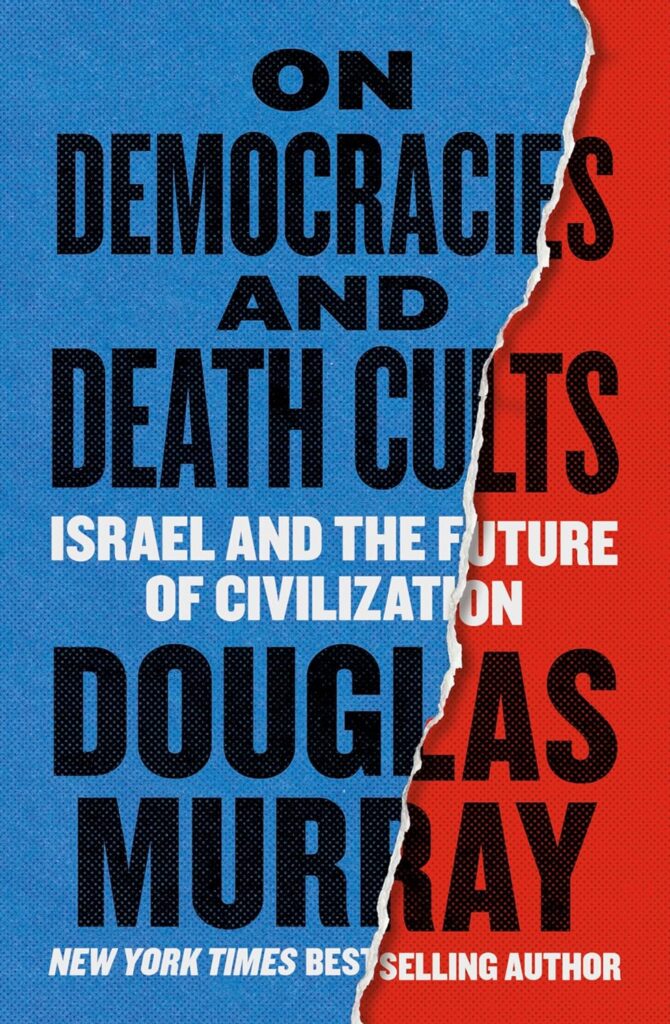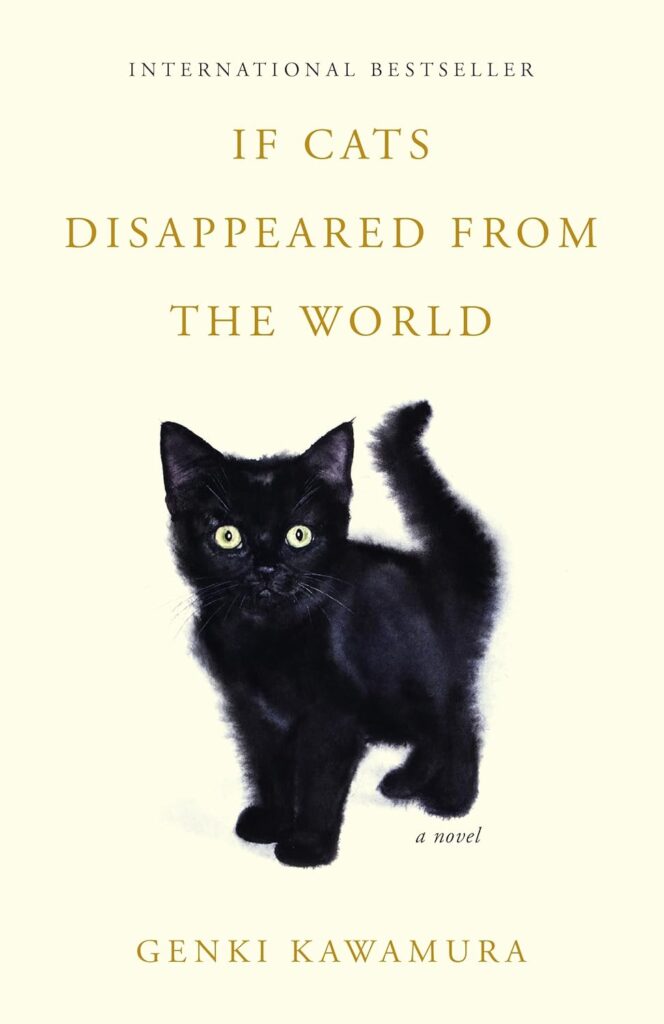Nothing about The Phoenician Scheme feels simple, though it’s easy to call it a Wes Anderson film right away. Here in his latest work (which just premiered June 6, 2025), Anderson plants you in an eccentric web of espionage and dark comedy, led by sharp visuals, muted colors, and the kind of diorama-styled sets that have become his hallmark (as noted by The Guardian and coverage on Rotten Tomatoes). I recognize that the plot—structured around the scheming Zsa-zsa Korda and his family—leans more toward visual display and absurdist humor than deep storytelling, and I can already feel that tension while watching.
I’m drawn to the way Anderson toys with themes of power, morality, and legacy, yet I also sense his humor feels more bittersweet and the emotional core, at times, feels muted. There’s a lot critics are already saying about this film: some admire the craftsmanship and unique score (Igor Stravinsky’s music is a force here), while others point out creative risks that don’t always pay off. In this review, I’ll unpack not only how The Phoenician Scheme fits into Anderson’s body of work, but how it stacks up against similar films, where its characters falter and shine, its biggest strengths and weaknesses, and what kind of rating it honestly deserves.
I want to be clear with my own reactions, reflecting both on the bigger picture and those small moments that stuck with me (or left me frustrated). The Phoenician Scheme is more than just a title—it’s a tricky experiment in style and tone, with real debate over what Anderson is chasing now as a director. This review covers all of it, with my promise to keep things honest, reflective, and as transparent as possible.
Table of Contents
Wes Anderson and the Making of ‘The Phoenician Scheme’
Every time Wes Anderson puts out a new film, I go in expecting a very particular mood: symmetrical compositions, characters stitched together by dry humor, and environments so stylized that they feel like looking through a snow globe. With “The Phoenician Scheme,” Anderson doesn’t just stick to the script—he stains the script with fingerprints, flaws, and the pressure of everything he’s done before. There’s a lot more going on behind the scenes in this one than just his typical visual quirks, and it’s not lost on me how much that changes the energy.
 Photo by Bruno Massao
Photo by Bruno Massao
Anderson’s Approach: Balancing Familiarity with New Risks
For a director with such a recognizable fingerprint, it would be easy to simply double down on old habits. Yet, Anderson—alongside his longtime collaborator Roman Coppola—approaches “The Phoenician Scheme” with a sense of personal reckoning. The film doesn’t shy away from showing its own seams; there are choices that feel almost confessional, as if Anderson is letting us peek behind the velvet curtain to watch him second-guess the form and function of his nostalgic style.
In several interviews, including one in The Atlantic, Anderson hints that “The Phoenician Scheme” is his most porous film yet—modern anxieties and self-awareness leaking into his tightly controlled world. This move feels risky, but also necessary. For once, the saturation is dialed down, both visually and emotionally. Everything is still in its right place, but the edges are fuzzier, the emotions more uncertain. The result is that we’re left questioning not only the characters’ choices but the director’s motives, too (The Atlantic: Reality Filters Into Wes Anderson’s ‘Phoenician Scheme’).
Influences and Creative Decisions
I’ve seen Anderson’s influences in every frame, and critics have dissected the same names for years: Jacques Tati, Jean-Luc Godard, Roman Polanski, and even Spielberg (though in spirit more than in genre). What feels different in “The Phoenician Scheme” is how actively those influences shape the narrative. There are nods to Polanski’s paranoia, the fragmented family spaces of Godard, and that consistent Andersonian love for constrained environments.
Color and set design hold less whimsy this time, replaced with muted pastels and cramped diorama rooms that feel like the world is pressing inward. His familiar use of long takes and measured camera movements is still there, but now, those moves heighten a quietly growing discomfort rather than a quaint nostalgia (The Wes Anderson Style Explained).
Collaboration and the Story’s Conception
Something that sticks out to me about “The Phoenician Scheme” is how it represents a culmination of Anderson’s partnership with Roman Coppola. Their writing process has always been intensely collaborative, sometimes even labyrinthine. Here, you can almost sense that tension—the push and pull between routine and experiment. Coppola helps push Anderson out of his comfort zone while keeping the film from spinning completely off its axis.
A lot of the movie’s plot is built around Anderson’s ongoing themes: tangled families, suppressed longing, and schemes-within-schemes. But at moments, there’s a sense that Anderson is asking himself what happens if his “rules” get bent or even broken a little. By leveraging his familiar ensemble cast and bringing in new faces who don’t quite fit into the dollhouse (on purpose), Anderson allows the story to breathe in unexpected ways (The Phoenician Scheme on Wikipedia).
Real-World Inspiration and Production Notes
Long before “The Phoenician Scheme” started filming, Anderson had been mulling over current events and shifting cultural moods. The secrecy behind the production was notable, even for him. I read that set pieces were kept under wraps and the script went through more revisions than he’s ever admitted to before. All of this makes sense when you trace the film’s themes of deception, misdirection, and personal doubt.
Production design fits right into the established Anderson brand, but it’s toned down in a way that fits the subject matter—less “storybook,” more faded photo album. Anderson and his team built whole interiors on soundstages, using practical effects as much as possible to give every scene a tactile feel—even the supposedly fantastical ones. Looking at various sources, it’s clear that Anderson’s decision to avoid over-the-top digital work was deliberate, reinforcing the feeling that “scheme” is the right word not only for the plot, but for the process by which the movie itself came together (Slate: Wes Anderson’s new movie examines his own limitations).
Anderson’s unwillingness (or inability) to fully mask his creative anxiety is, to me, the most honest part of “The Phoenician Scheme.” In those moments where style gives way to vulnerability, I see a director still finding new ways to confront both his audience and himself.
If You Enjoyed ‘The Phoenician Scheme’: Directors and Films With a Similar Vibe
Whenever I finish a Wes Anderson film—especially one as particular as “The Phoenician Scheme”—I find myself hungry for more: more oddball angles, more playful paranoia, more characters who seem just barely tethered to real life. If you walked out of Anderson’s latest movie (or finished streaming it at home) feeling that same itch, you’re definitely not alone. Over the years, filmmakers have taken cues from Anderson’s style, blending surreal humor with visual quirks and an undercurrent of emotional restraint. Sometimes, these films nail that rare mix of whimsy and unease in a way that’s both familiar and a little bit fresh.
My preferences aren’t always universal, but I’ve noticed certain directors and movies hit the same oddball frequency. Their stories might orbit espionage, dysfunctional families, or simply the strangeness of day-to-day life. What’s constant is this sense of precision and melancholy, often coupled with set pieces so detailed you can practically smell the paint drying on the props. Exploring these films brought me comfort, curiosity, and a moment to reflect—on both art and the ways we tell stories.
Directors Who Share Anderson’s Spirit
I’ve spent plenty of time trying to pin down what makes Anderson’s work so distinct, and it always comes back to his precision and his affection for characters that never quite fit their world. A handful of directors share those qualities, whether in story structure, visual construction, or just a tendency to let the weirdness show.
- The Coen Brothers: Whenever someone talks about stylized dialogue and a sly sense of humor, I think of Joel and Ethan Coen. Their film “Burn After Reading” in particular echoes the madcap, espionage-laced energy of “The Phoenician Scheme,” mixing paranoia with absurdity in a way that’s both sharp and strangely heartbreaking.
- Paul Thomas Anderson: No relation to Wes, but Paul’s “Inherent Vice” does for ’70s detective stories what “The Phoenician Scheme” does for Cold War spy tropes. Everything feels half-lost in a cloud of nostalgia and confusion, and the dry wit and offbeat camera work create a similar mood.
- Rian Johnson: Especially in “The Brothers Bloom,” Johnson crafts a heist story full of eccentric characters and ornate sets, leaning into whimsy and melancholy without losing narrative focus.
- Michel Gondry: Though a bit more fantastical, Gondry’s use of practical effects and surreal, childlike logic—in films like “The Science of Sleep”—reminds me a lot of Anderson’s early work.
Films Worth Watching If You Liked ‘The Phoenician Scheme’
There’s no neat box for a Wes Anderson film, but several movies give off a similar pulse. Some double down on the espionage and dark comedy, while others just soak in that mix of color, symmetry, and sad-eyed humor.
If you’re open to branching out, here’s a list you’ll want to jot down. Each one offers a taste of what makes “The Phoenician Scheme” linger after the credits roll.
- Burn After Reading (2008)
The Coen Brothers treat CIA secrets like a hot potato, with twists that land hard and humor that’s as dry as it is dark. - Inherent Vice (2014)
Paul Thomas Anderson’s take on Pynchon’s detective novel is a haze of neon, paranoia, and longing—a near-perfect match for those post-“Phoenician Scheme” blues. - The Brothers Bloom (2008)
Rian Johnson’s colorful conman saga plays with storybook visuals and self-aware narration, inviting you to care about its broken, charming cast. - The Grand Budapest Hotel (2014)
It might sound obvious, but I can’t leave this one off. Anderson’s own “The Grand Budapest Hotel” is peak style and melancholy, leaning even further into the “scheme” of things. - Kiss Kiss Bang Bang (2005)
Shane Black’s irreverent comic noir is a sharp, brisk puzzle that’s heavy on pulse and play—definitely worth your time if you want to trace the same DNA. - The Science of Sleep (2006)
Michel Gondry’s daydream comedy gets at the blurred lines between reality and imagination, using hand-crafted visuals that recall some of Anderson’s best set pieces.
I relied on lists like Collider’s roundup of similar films and dedicated Reddit threads to probe beyond just the obvious picks. Movies as strange and smart as these rarely go out of style, even when their influence sneaks up quieter than you’d expect.
Why These Films and Directors Stand Out
Watching films in this mini-genre, I feel like I’m peeking into a parallel theater where irony and sadness finish each other’s sentences. Their directors frame the world with such care, yet never lose sight of the emotional awkwardness (or silent dread) lurking beneath the laughter. This is what sticks with me: when a film lets you nod at its cleverness, but still pulls you close enough to notice the cracks in the mask.
Directors with this touch often opt for stories less about stakes, and more about characters bumbling through their mistakes. Their plots spiral out, but the human moments—those lingering glances, the unspoken regrets—always hold it together.
Each of these films, in their own way, captures the spirit of “The Phoenician Scheme”: anxious, affectionate, rigorously made, but never quite secure in its own story. They all value the careful blend of style with honesty, which is (in my view) the real magic behind Anderson’s recent work.
For those hungry for even more recommendations, the complete ranking on Ranker gives an expanded look at what fans are watching next.
Other Anderson Films If This One Didn’t Hit for You
Not everyone leaves a Wes Anderson film satisfied. Sometimes the tone is a bit too arch, or the story feels elusive. In that case, I recommend looking backward instead of sideways—toward Anderson’s own archive. Titles like “Rushmore” or “Moonrise Kingdom” keep that signature blend of earnestness and oddity, offering different shades of his evolving vision. The list of “best Wes Anderson films to watch if The Phoenician Scheme isn’t your vibe” at Metro UK is worth bookmarking for future movie nights.
 Photo by Brayan Chul
Photo by Brayan Chul
One reason I keep circling back to these titles is simple: they offer not just style, but a searching honesty. When “The Phoenician Scheme” leaves you wanting more—whether that’s more laughs, more awkward silences, or just more beautiful strangeness—these directors and films give you a way in.
Strengths and Weaknesses of ‘The Phoenician Scheme’
Wes Anderson’s “The Phoenician Scheme” stands as one of those films people want to pick apart—both for what works and for where it wobbles. Sitting with the movie, I kept adjusting my own expectations: hoping for another classic, yet open to discomfort and risk. My feelings about the strengths and weaknesses are honest, sometimes conflicted, but always grounded in what matters most—how the film feels on screen and how it lingers in my thoughts after.
 Photo by 𝗛&𝗖𝗢
Photo by 𝗛&𝗖𝗢
Standout Strengths
Watching “The Phoenician Scheme,” I found real joy in several core strengths. Some of these are features that long-time fans expect, while others feel like new territory for Anderson.
- Powerful Performances: The film is stacked with seasoned talent. I noticed the cast (returning faces and surprising newcomers) understood their roles, balancing comedy with the film’s edge of discomfort. Reviewers agree that these performances often steal the show, even when the story stumbles (Review: ‘The Phoenician Scheme’ straddles the line between wonderful and overdone).
- Visual Craft: Anderson’s ability to frame a shot remains unmatched. Every room, costume, and color choice serves a purpose. The style may be a little more restrained this time, but it still pops—giving the story that signature, hyper-organized look. Several critics called the film a “visual banquet,” which echoes what I felt watching each scene unfold (Movie Review: The Phoenician Scheme).
- Sharp Humor: There are moments of dry, biting humor throughout. I was caught off guard more than once by a bit of dialogue or a physical gag that cut through the film’s sometimes heavy mood. These flashes of wit land, even when surrounded by chaos.
- Unique Soundtrack: The use of Igor Stravinsky’s music shapes the emotional range of the movie. It sets a tone that is both unsettling and beautiful, anchoring scenes in a way that only Anderson can manage.
In spite of some skepticism, I felt the film’s sincerity. That thread of hope, even with a protagonist steeped in corruption, gave me a way in emotionally—even as the story poked fun at itself (‘The Phoenician Scheme’ review: Wes Anderson does something new).
Clear Weaknesses
After my initial enthusiasm faded, I noticed areas where “The Phoenician Scheme” struggles. Some of these issues feel deliberate—part of Anderson’s self-examination—while others read as creative missteps.
- Slender Plot: The narrative feels thin. During some scenes, I caught myself drifting or wondering if the plot was meant to be opaque on purpose. Reviews highlight this same feeling: that the story can seem like an afterthought, never quite reaching the heart or depth of Anderson’s best work (The Phoenician Scheme movie review (2025)).
- Emotional Distance: While style and structure shine, emotional moments don’t always land. Characters occasionally feel like pieces moved across a chessboard, more than people I should care about. As much as I wanted to connect, some scenes left me cold.
- Self-Awareness Overload: There’s a meta quality that, while clever, verges on indulgent. I appreciate self-reflection, but too much of it can take me out of the world the film tries so hard to build. The movie sometimes gets caught up asking what a Wes Anderson film is, instead of just letting the story breathe (Reality Filters Into Wes Anderson’s ‘Phoenician Scheme’).
- Pacing Flaws: The editing can be jarring. The first act moves fast, almost breathlessly, then slows to a crawl in later scenes. This unevenness affects how much momentum the film carries as it tries to tie up its loose ends.
Reading through these flaws may sound harsh. But I think honest critique is the most respectful way to approach a film that asks for more than just applause.
The Balancing Act
When I reflect on “The Phoenician Scheme,” the highs and lows feel tightly wound together. Its best bits let Anderson’s style evolve, while the rough edges point toward a creative reckoning simmering beneath the surface. For me, this tension creates a more memorable—if less polished—experience than some of his previous work.
Bringing in sources like RogerEbert.com and The Atlantic helped me see that these mixed feelings aren’t just mine. Critics are sensing the same strengths, while being upfront about what left them wanting more. As someone who values transparency, I’ll always favor a complicated (if sometimes flawed) work over a safe one.
Character Breakdown and Analysis: Power, Family, and Moral Complexity
When I watched “The Phoenician Scheme,” I found myself circling back to the way Wes Anderson draws his characters—always with a cool detachment, but here, there’s a darker sense of who holds power and at what cost. This isn’t a film where the players are easily sorted into heroes and villains. Instead, every major figure exists somewhere in a grey zone. By organizing the Korda family around an axis of shifting alliances, hidden motives, and unspoken regrets, Anderson steps into territory that, while familiar to his style, feels even more deliberate and raw. In this section, I’m diving into the core trio: how power is grabbed and handed down, how family ties tangle everything, and why no one comes away clean.
The Architecture of Power: Zsa-zsa and the Manipulation of Others
It struck me right away that Zsa-zsa Korda isn’t your typical comedy antihero. He’s magnetic, a little pitiful, and mostly operates from a place of carefully controlled chaos. Unlike the often-sympathetic eccentric leads in Anderson’s earlier films, Zsa-zsa creates a climate where everyone else orbits around his appetites and anxieties. Anderson sketches his arrogance and insecurity in equal measure. Even his jokes seem to land with a sense that he’s holding all the cards—until the moment he very clearly isn’t.
- Control vs. Chaos: Zsa-zsa constantly tests the limits of what he can make others do for him. I watched how his decisions (sometimes petty, sometimes cruel) forced subordinates and family members into impossible situations. He’s operating in a space where power isn’t just about being in charge; it’s about shaping reality to serve his fears.
- Echoes of Other Film Icons: His approach to power reminded me of classic characters like Vito Corleone, not in direct action, but in the way his presence destabilizes everything around him (The Godfather: A Cinematic Masterpiece of Crime, Power). While Corleone’s control feels regal, Zsa-zsa’s style is neurotic, brittle, and at times self-defeating.
What’s so strange is how Anderson refuses to give us catharsis. Zsa-zsa never has that moment of realization or change. Instead, we’re left watching a man set up dominoes not knowing—or maybe not caring—which ones will fall.
Family as Baggage and Battleground
The Korda family has the burden of legacy layered over each moment, and it’s impossible not to notice the strain seeping through their conversations and betrayals. Anderson builds these relationships like clockwork—each character responding to invisible wounds and needs that often contradict what’s best for the group.
 Photo by RDNE Stock project
Photo by RDNE Stock project
- Inheritance of Trauma: Characters buckle beneath their shared history. Instead of healing, each family member tries to rewrite or outmaneuver the past. What might start as protection quickly turns into smothering, sabotage, or bleak humor.
- Conditional Loyalty: Family here is both weapon and weakness. I watched siblings who alternated between fierce loyalty and deep resentment—making every scene feel like a negotiation between what’s owed and what’s unforgivable.
I couldn’t help but recognize patterns that echo other iconic film families, where love becomes a kind of silent contest (Exploring Themes and Characters in “The Godfather” Film). It reminded me that Anderson, for all his cleverness, never loses sight of pain beneath the quirks.
Moral Complexity: No Easy Outs
In “The Phoenician Scheme,” there’s almost no room for easy conscience. Every action—big or small—ripples out with unintended consequences. I found myself wrestling with whether it was even possible to root for anyone. Anderson’s script seems to ask whether doing what’s right is even possible when everyone is living behind masks.
- Ambiguity Over Answers: No one is let off the hook. Zsa-zsa, his partners, even the supporting players all face choices that implicate them, test their values, and reveal inconvenient truths about what they’re willing to do to maintain their illusions of control.
- Influence of Classic Moral Ambiguity: It’s hard not to see the fingerprints of films like “The Godfather,” which reshaped how we see good and evil on screen (The Enduring Legacy of ‘The Godfather’: Analyzing Power). Anderson takes that tradition and makes it his own through undercutting any grand gesture with awkward humor or a sideways glance.
For me, what sets “The Phoenician Scheme” apart is not just the design or soundtrack—it’s that every laugh or sigh is tangled with guilt, regret, and the long shadow of self-preservation. No matter how many times Anderson frames his characters in perfect symmetry, their stories swerve away from neat answers. If anything, the film reminds me that power always corrupts, families always disappoint, and the truth is that we’re all a little compromised by what we’re trying to protect.
If you’re as curious about Anderson’s recurring themes as I am, it’s worth exploring detailed breakdowns of his signature style and what sets his characters apart (Unpacking Wes Anderson’s Cinematic Style). These sources deepen the view of how he builds empathy by exposing his characters’ limitations, not despite them, but because of them.
Audience Reception and Ratings: How ‘The Phoenician Scheme’ Measures Up
Taking stock of how “The Phoenician Scheme” lands with people is essential for anyone trying to decide if it’s worth two hours and the price of a ticket. My own feelings about the movie are partly shaped by stepping back and seeing how others are talking about it, both in critic circles and among regular viewers. It’s honest work sifting through praise, shrugs, and outright confusion—especially when a director like Wes Anderson makes something that refuses to settle into any single mood. The split between critical response and audience reaction says plenty about what viewers want from a film, and what they’re willing to forgive when a favorite director heads in an unexpected direction.
 Photo by Tima Miroshnichenko
Photo by Tima Miroshnichenko
Aggregated Scores: A First Glance at the Numbers
When I first checked on the overall ratings for “The Phoenician Scheme,” I noticed something right away: audiences and critics are not exactly in sync. The film’s profile on Rotten Tomatoes shows a critic score that hints at deep respect for Anderson’s personal risks, but an audience score that doesn’t quite match that enthusiasm. It’s rare to see such a gap outside movies that thrive on divisiveness.
To make this concrete:
- The Tomatometer (from critics) stands just above 78%, suggesting a consensus that the craft and odd humor at least deserve recognition.
- Audience scores linger in the 60–65% zone, more muted, often referencing mixed feelings about Anderson’s stylistic experiments and the film’s emotional detachment.
Over on IMDb, the story is similar. User reviews point to an average rating that orbits the 7/10 mark, with extremes on either end—fives and nines alike (The Phoenician Scheme – User reviews). These numbers don’t tell the whole story, but they do capture one truth: this is a film that leaves viewers split, if not speechless.
What Critics Are Saying: Divergence, Praise, and Frustration
Diving into published reviews, I see a genuine appreciation for Anderson’s willingness to push against comfort, even if the results are uneven. Several major outlets describe “The Phoenician Scheme” as an oddly urgent and somewhat mature entry into Anderson’s filmography. Critics often use phrases like “harder to follow” or “less vibrant,” but then circle back to compliment Anderson’s visual confidence and persistent humor (The Phoenician Scheme – Movie Reviews). This tells me critics are grading him not just on movie quality, but on willingness to stray from his most familiar patterns.
A Forbes review summed up the consensus well: the film is lauded for personal risk yet dinged for narrative opacity. This is the kind of split reaction I see whenever a director reevaluates their style in real time, tossing the audience and themselves into new uncomfortable spaces.
Common themes in critical responses include:
- Impressed by steady visual craft, even when the color palette is deliberately muted.
- Respect for vulnerability as Anderson exposes creative limits.
- Frustration with a plot that sometimes evaporates just as it should feel most urgent.
I hear in their voices a mix of relief (Anderson didn’t take the lazy path) and irritation (he didn’t make it easy for anyone, either).
Real Audience Sentiment: What the Viewers Bring Up
If I pull away from the official reviews and look at audience voices—user commentary on platforms like Reddit and IMDb—another pattern emerges. Opening weekend threads have people swapping first impressions and comparing the experience to other Wes Anderson films. The mood is mixed, but not dismissive.
Highlights from audience feedback on platforms like Reddit and IMDb include:
- Viewers who “get” Anderson’s oddness celebrate the movie’s unapologetic awkwardness.
- Some call out a lack of emotional connection, even as they admire the style. The film is described as “gloriously mad” or “impossible to fully love but impossible to write off.”
- A few first-week audiences note that early box office returns were surprisingly strong per screen, even if word-of-mouth cooled expectations.
It matters, too, that people who didn’t like the film often sound disappointed more than angry—the kind of frustration that comes from hoping a movie would click and realizing it just didn’t. I relate to that feeling. Sometimes I watch a film and know it’s wired for a very specific mood and can accept that I’m not always the target.
Patterns in Praise and Critique
With all the numbers and opinions laid out, I see clear themes emerge—reasons why “The Phoenician Scheme” divides its audience, and why the split is as honest as it is predictable.
Some of the positives people keep referencing:
- A return to Anderson’s roots while making room for creative discomfort.
- Bold stylistic choices that demand patience and close watching.
- Comedic moments that strike in places most spy comedies won’t venture.
But the critiques just as often surface:
- Difficulty connecting with characters who feel more conceptual than human.
- An editing rhythm that’s both jarring and sometimes, oddly slow.
- Narrative risks that leave too much ambiguity, even for Anderson diehards.
For anyone interested in the “why” behind the numbers, reading through detailed user reactions on Rotten Tomatoes or peeking at lengthy discussions on IMDb brings out these points in plain language.
How “The Phoenician Scheme” Sits in the Broader Conversation
Thinking about how audience reception fits within the larger discussion about Anderson’s career, I notice the blend of reverence and restlessness. Fans want growth; they also want comfort. When a film like this pushes into new territory (sometimes awkwardly, sometimes bravely) it’s bound to polarize—even within an already loyal crowd.
This push and pull between admiration and alienation is where most of us live when watching “The Phoenician Scheme.” For my part, I value the honesty in these mixed reviews. I trust them more than a wall of praise because they remind me that art should unsettle as much as it charms. In a world hungry for certainty, movies like this give us reasons to keep asking questions—about taste, risk, and the very point of trying something new.
Conclusion
Sitting with “The Phoenician Scheme,” I keep returning to the sense of risk that pulses through every scene. Anderson’s usual craft—precise visuals, sharp set dressing, and sly humor—is there in full force (see Baltimore Magazine’s review), but the emotional throughline sometimes gets lost beneath layers of style. I saw traces of his old warmth, but more often I felt a reserved, almost chilly remove, especially compared to the rawer pleasures of “Royal Tenenbaums” or the inventive urgency of “Grand Budapest Hotel” (as echoed by RogerEbert.com and The Guardian).
It’s clear that Anderson hasn’t repeated himself, not entirely. He pushed his aesthetic to the edge, maybe even to the point of exhaustion. If you crave narrative clarity or deep character arcs, you may leave hungry, but the film’s critique of power and legacy still lingers—especially in moments when Zsa-zsa Korda’s schemes threaten to fold under their own cynicism. The Stravinsky score, the intricate props, and Threapleton’s performance keep it from sinking into self-parody (and several critics agree, even as they point out the film’s emotional distance).
For anyone who values style as much as substance, “The Phoenician Scheme” remains worth your time, even if it stirs complicated feelings about where Anderson is headed next. I’m still unpacking my reaction, honestly. I’d love to know if you see this as a bold late-career pivot or a sign that his signature approach could use a bit more warmth. Thanks for reading. If you’ve seen “The Phoenician Scheme,” share your thoughts below—what struck you, what didn’t, and whether it changed how you see Anderson’s films as a whole.

